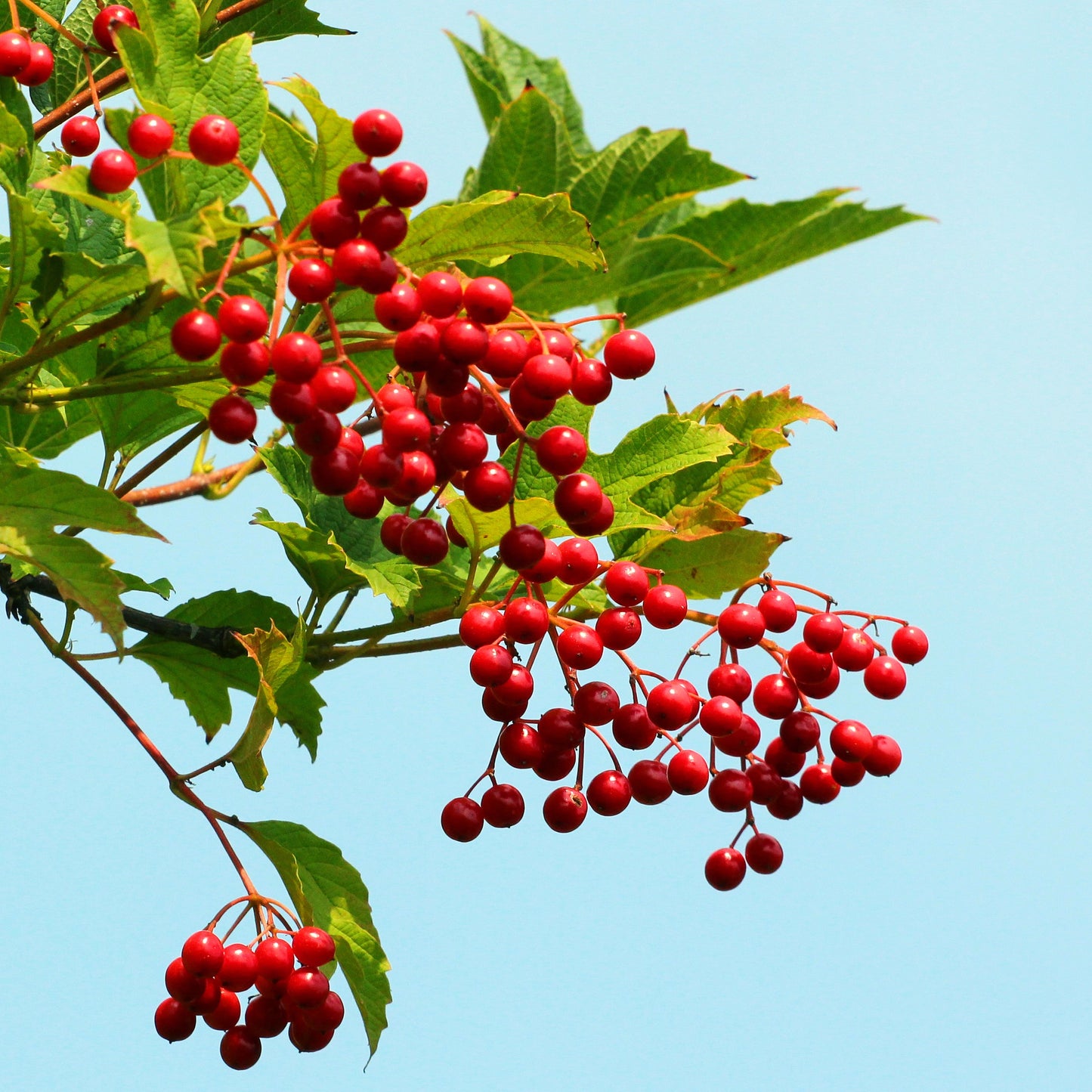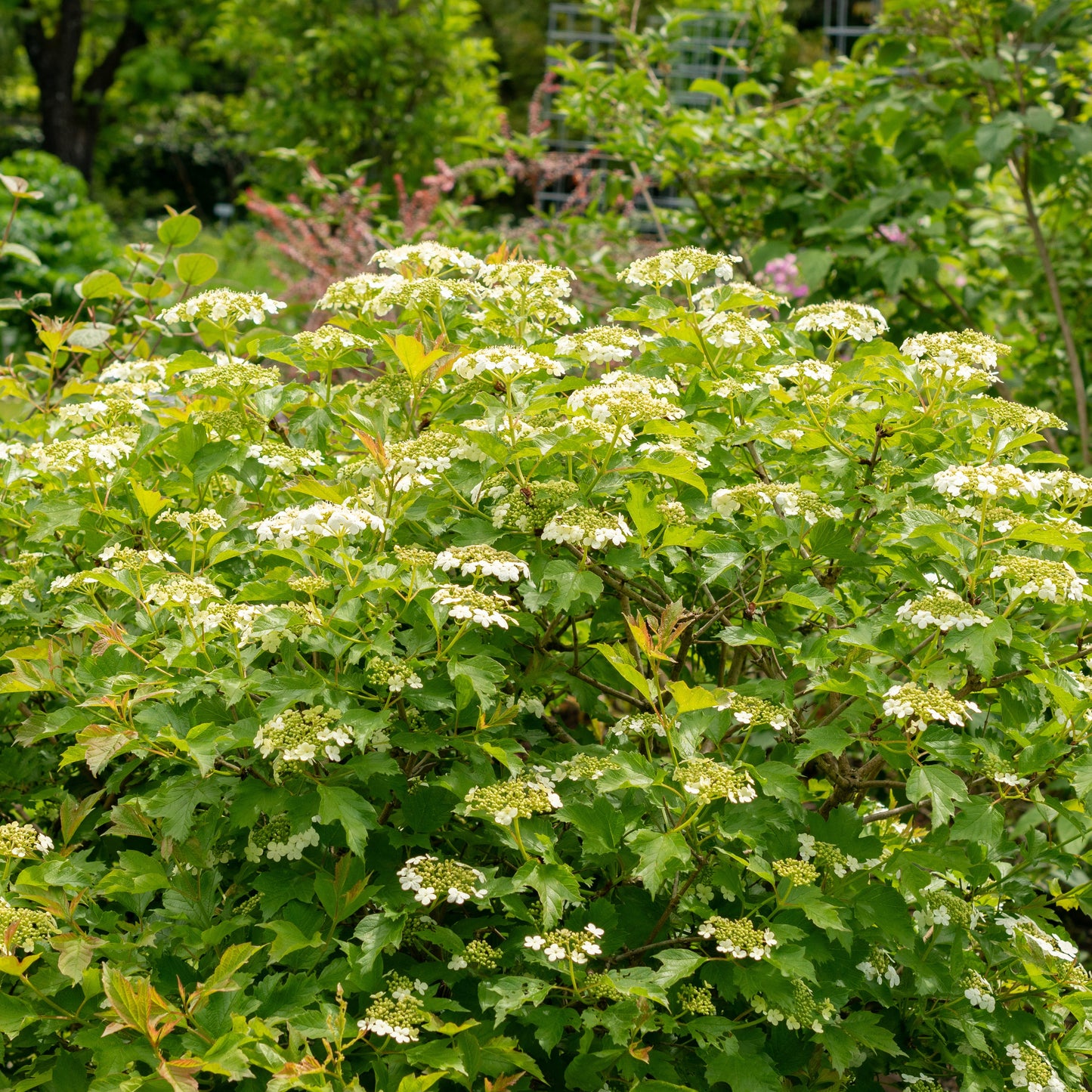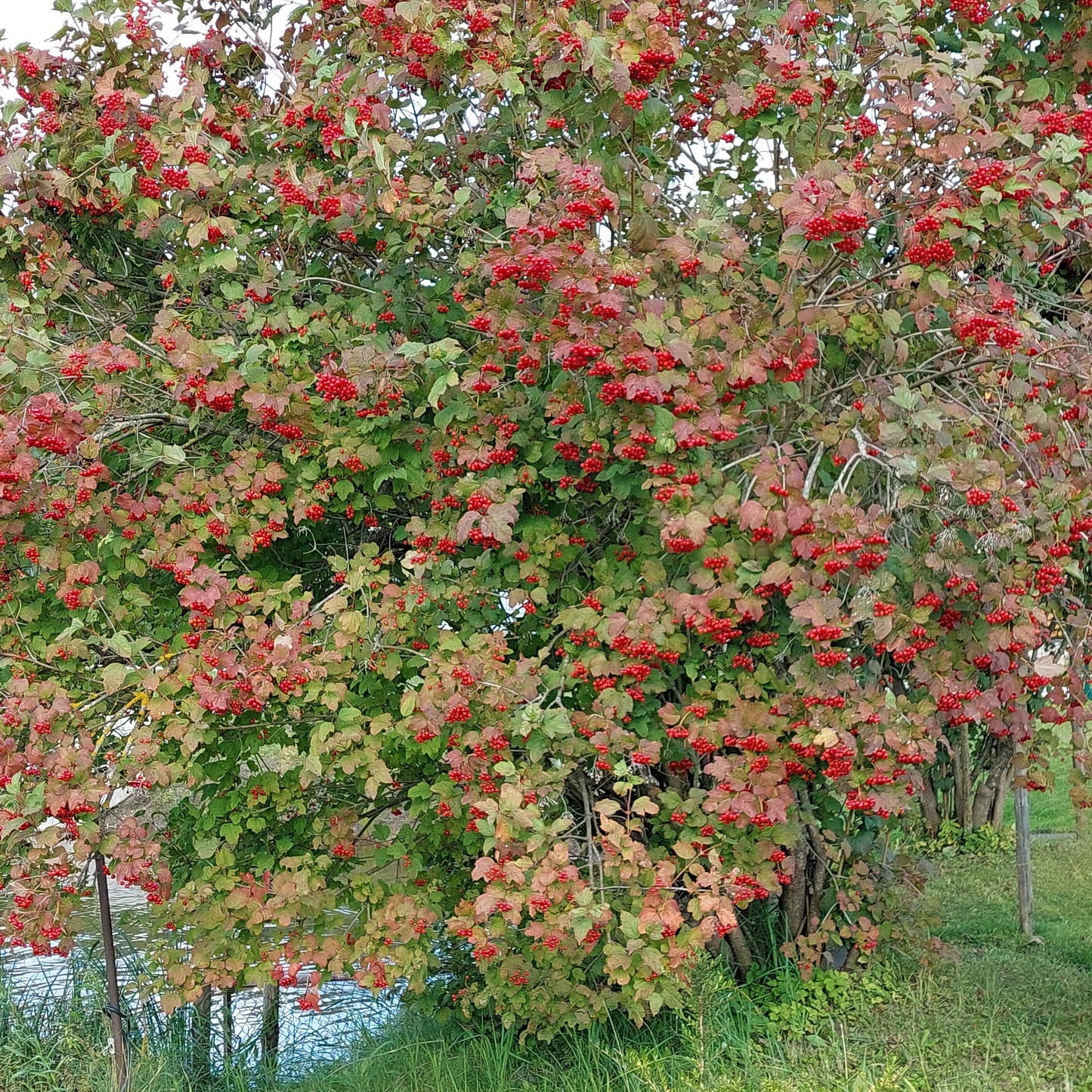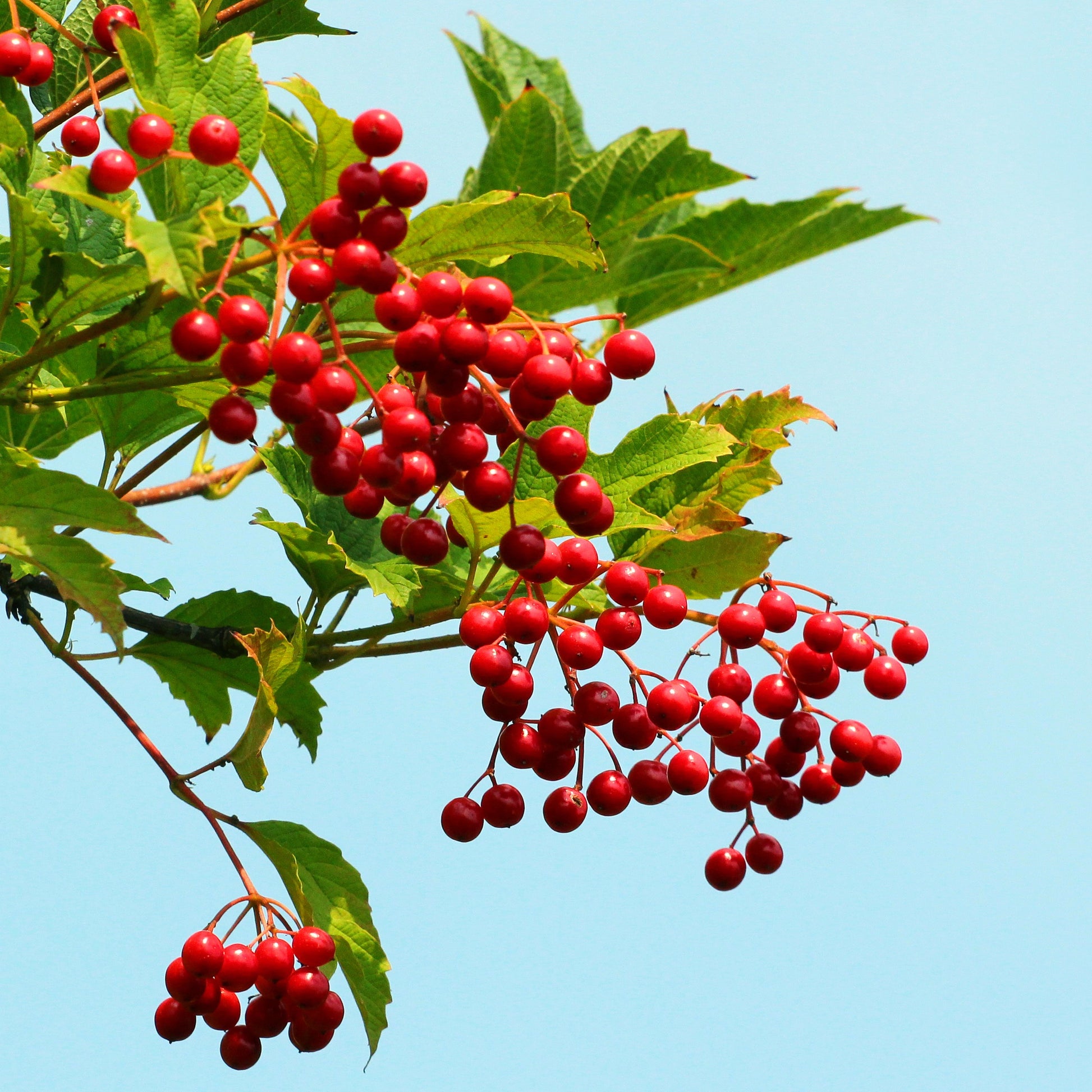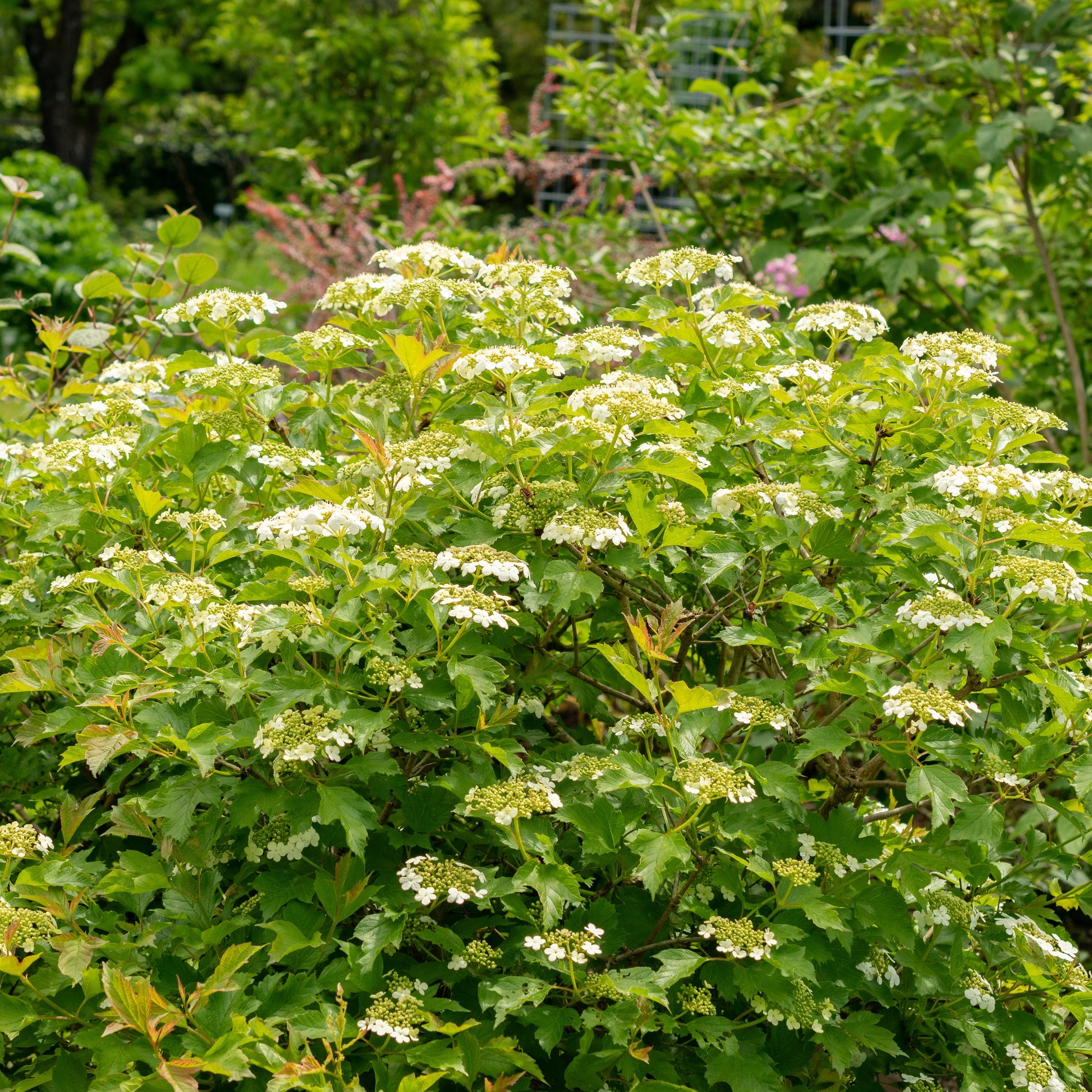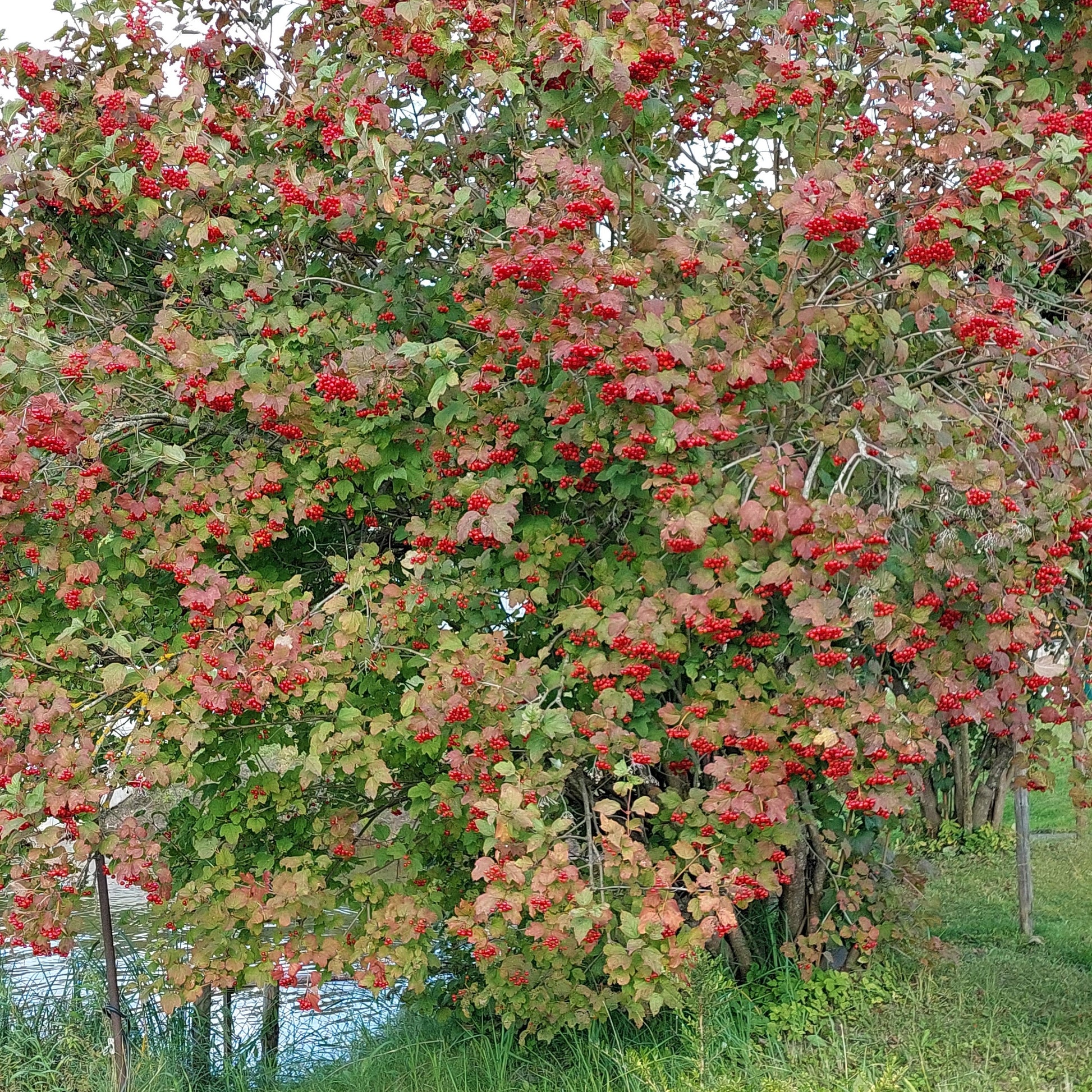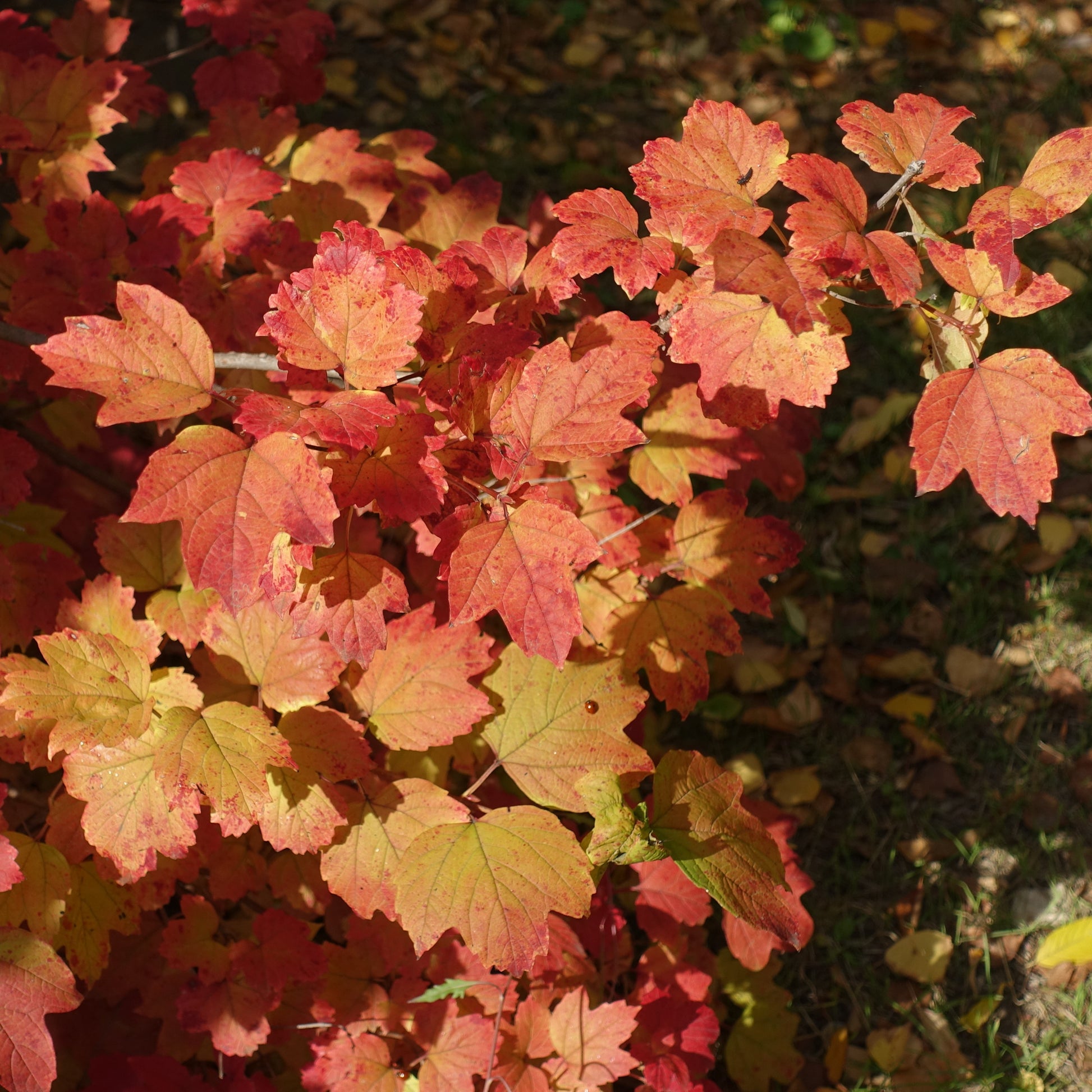Limited Quantities - Reserve Now For Fall
Highbush Cranberry Bush
Highbush Cranberry Bush
Couldn't load pickup availability
Viburnum trilobum, also known as Viburnum opulus var. americanum
Highbush Cranberry Bush
The Highbush Cranberry Bush is a versatile native shrub prized for its four-season interest, edible fruit, and pollinator-friendly blooms. With lacecap-style white flowers in spring, bright red berries in fall, and crimson foliage, this hardy plant thrives in a wide range of climates and conditions.
Ideal for edible hedges, wildlife borders, and naturalized landscapes, the Highbush Cranberry provides beauty, biodiversity, and functional value in every season.
Highbush Cranberry Bush Overview
| Attribute | Details |
|---|---|
| 🌿 Botanical Name | Viburnum trilobum / Viburnum opulus var. americanum |
| 🏷️ Common Names | Highbush Cranberry, American Cranberrybush |
| 🌳 Mature Height | 8–12 feet |
| 🌐 Mature Width | 6–10 feet |
| 📈 Growth Rate | Moderate (12–24 inches per year) |
| ⏳ Lifespan | 30–50+ years |
| 🧊 USDA Zones | 2–7 |
| ❄️ Chill Hours | 800–1,000 hours |
| ☀️ Sun Preference | Full sun to partial shade (best fruiting in full sun) |
| 🧱 Soil Type | Moist, well-drained loam, clay, or sandy soils |
| ⚖️ Soil pH | Slightly acidic to neutral (5.5–7.0) |
| 💧 Water Needs | Moderate to high; tolerates occasional wet conditions |
| 🌸 Flower Color | Flat-topped white lacecap blooms; late spring |
| 🍒 Fruit Type | Bright red berries in clusters; tart and edible when cooked |
| 🐝 Pollinators | Attracts bees, butterflies, and hoverflies |
| 🌿 Growth Habit | Upright, multi-stemmed, spreading form |
| ↔️ Spacing | 6–10 ft apart for hedging or borders |
| 🏡 Landscape Uses | Wildlife borders, edible hedges, woodland edges, rain gardens |
| 🧹 Maintenance Level | Low to moderate |
Environmental Benefits
🌸 Provides nectar and pollen for native bees and butterflies
🍒 Produces nutrient-rich berries for birds, deer, and small mammals
🌿 Supports biodiversity and native food chains
🌧️ Helps stabilize soils in wet, riparian, or sloped environments
Pros & Cons
| ✅ Pros | ⚠️ Cons |
|---|---|
| 🍒 Edible fruit with culinary and medicinal value | 🍏 Raw berries are sour; best when cooked or sweetened |
| 🐝 Excellent pollinator support from spring to summer | 🌱 May sucker and spread in naturalized areas |
| 🌿 Beautiful form, blooms, fruit, and fall color | ✂️ Occasional pruning may be needed to maintain size or shape |
| 🧬 Native to North America with strong ecological value | 💧 Needs consistent moisture in drought-prone areas |
| 🏡 Thrives in many soils and sunlight conditions | 🐛 Can attract aphids or viburnum beetles in some regions |
Planting & Care Guide
🛁 Water thoroughly before and after planting to reduce transplant shock
🕳️ Dig a hole twice as wide as the root ball; plant at soil line
🌾 Apply 2–3 inches of mulch to retain moisture and suppress weeds
💦 Water deeply and consistently during the first two seasons
✂️ Prune after flowering to shape or rejuvenate older wood
🧪 Fertilize lightly in spring with compost or balanced shrub food
The Highbush Cranberry Bush is a multi-purpose native shrub that offers stunning seasonal color, bird-friendly berries, and essential pollinator support. Whether used in an edible hedge, a native wildlife border, or a rain garden, this plant brings function, flavor, and beauty to every season.
Share
